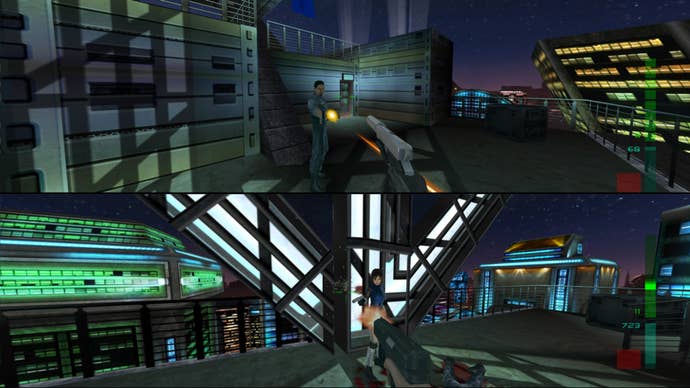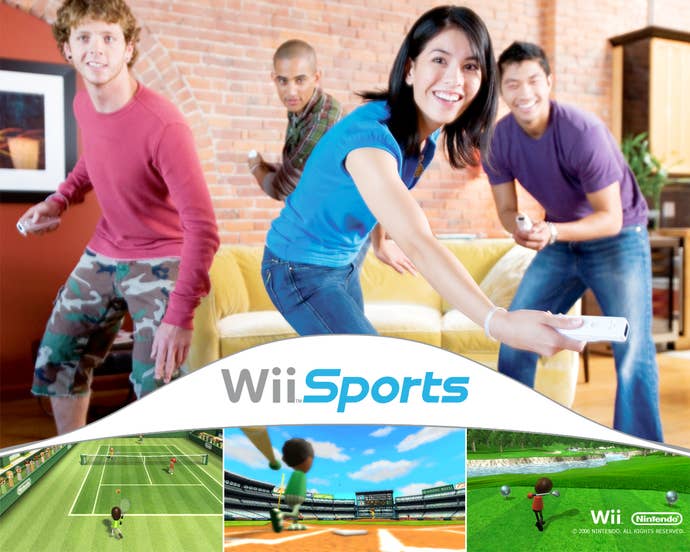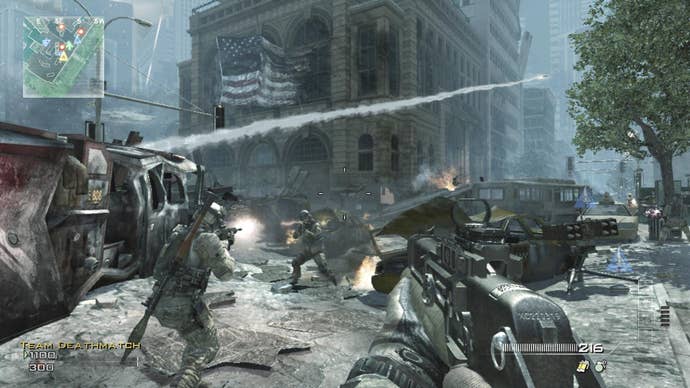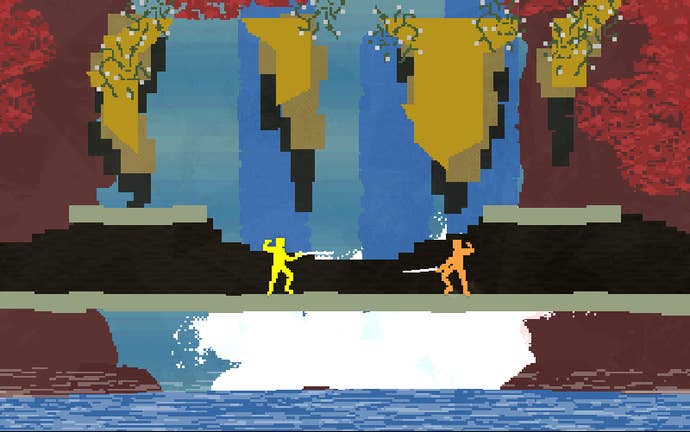The Rise and Fall and Rise Again of Local Multiplayer
For a while, it looked like online gaming had completely killed off the joy of having people over for a friendly game or two. But, it seems, couch gaming is back in a big way.
This article first appeared on USgamer, a partner publication of VG247. Some content, such as this article, has been migrated to VG247 for posterity after USgamer's closure - but it has not been edited or further vetted by the VG247 team.
The N64 had its faults -- a tendency towards horrible blurry textures, a screen resolution that would make early '90s PC games blush, a sound chip of questionable quality -- but by gosh was it ever a great machine for local multiplayer games.
For me, anyway, this marked a clear divide between Nintendo's cartridge-based N64 and Sony's CD-based first foray into the video games market with the original PlayStation. While there were exceptions in both regards, I generally much preferred the kind of single-player games that became available on the PlayStation -- RPGs, adventures, survival horror -- while, without a doubt, for my group of friends and I, the N64 provided a vastly superior multiplayer experience thanks to titles like Mario Kart 64, GoldenEye, Perfect Dark and even games not typically celebrated for their multiplayer component like Star Fox 64 and Conker's Bad Fur Day.
It became a regular occurrence: after attending the day's university lectures and seminars (or, occasionally, blowing them off in favour of getting a plate of the Student Union's curly fries and a revolting but potent cup of coffee) we'd bundle around someone's house, fire up the N64 and forget about those impending essay deadlines for a few hours thanks to the company of each other and some great games.

The Fall
For a while after that, though, it looked like the N64 would be the last great local multiplayer platform. While its successor the GameCube had a couple of good local multiplayer titles -- notably new iterations of both the Mario Kart and Smash Bros. series, both of which are still played by fans today -- that whole generation of video games was primarily defined by two things: compelling, technically impressive (for the time, anyway) single-player content, and the birth of online console gaming, spearheaded by Microsoft's first-generation Xbox Live service.
Meanwhile, PC gamers had already been playing online for some years by now, but then the PC had never really been a viable local multiplayer option for many gamers, anyway. Many PC games of the time -- this was well before we started seeing as many console ports as we see today -- erred on the somewhat complex side, particularly with regard to control schemes, and thus it was, for most people, impractical to crowd too many people around the small screen of a monitor for multiplayer funtimes.
The landscape of gaming during the sixth console generation, then, was clearly drifting away from local multiplayer experiences. Console gamers were getting their first taste of competing against random strangers on the Internet, and they were loving it. Meanwhile, solitary gamers were being well catered to with a steady flow of great titles on all platforms. In other words, the only people who weren't being particularly well looked after were those who liked nothing more than crowding a group of people around a TV and playing all in the same room.
Wii Love Local Multiplayer
The changeover to the seventh generation saw another shakeup, though. Xbox Live grew enormously into the all-encompassing behemoth it is today, and Sony attempted to follow suit -- mostly, but not entirely successfully -- with the PS3's incarnation of PSN. Nintendo, meanwhile, resolutely refused to join the online age for the most part, with its then-new console the Wii drawing harsh criticism from some quarters for its relative lack of online social features compared to its peers, its clunky Friend Code system and, well, the lack of many games that embraced online particularly wholeheartedly.
That wasn't what the Wii was about, though, and Nintendo had never attempted to pretend otherwise. The expectation for simple, easy online multiplayer a la Xbox Live had been set by Microsoft and Sony, not Nintendo; the Wii, rather, had always been positioned as a device for playing together with friends and family in the same room.

And it excelled at that in a way that neither the Xbox 360 nor the PS3 could touch. It even came with a great pack-in game -- Wii Sports -- that wholeheartedly embraced the ideals of same-room multiplayer and which became immensely popular not just with those who had been gaming for years but also, thanks to its accessibility and simplicity, with those who had never picked up a controller before in their life.
Developers and publishers were quick to capitalize on these two markets -- local multiplayer fans and what we now tend to refer to as casual gamers -- with an array of party games best experienced in groups. Many of these titles were pure shovelware, of course, but there was the odd diamond in the rough. Meanwhile, Nintendo continued to iterate on its franchises with its ever-reliable predictability, releasing new installments in the Smash Bros. and Mario Kart series right on schedule and seemingly ushering in another golden age of having friends over for some trash-talk and gaming funtimes.
But it wasn't to last.
The Casual Gamers Jump Ship
Then came mobile gaming, of course, and all those casual gamers that Nintendo had successfully attracted to the console gaming space promptly jumped ship to iOS and Android platforms -- why buy a dedicated gaming system when you can simply play with a device you probably have to hand anyway? The Wii was in its death throes, then -- we did get the three stellar RPGs Xenoblade Chronicles, The Last Story and Pandora's Tower before it eventually died its final death, but those were resolutely single-player titles, and the future was looking bleak for new local multiplayer experiences on traditional consoles.

Meanwhile, online gaming was going from strength to strength on PS3, Xbox 360 and PC and appeared to show no signs of slowing down. We started to see annual releases of popular franchises like Call of Duty, and even series originally known as single-player titles -- like Assassin's Creed, Uncharted and BioShock -- began to implement online multiplayer options, much to the chagrin of some commentators. Multiplayer started to be seen as something "necessary" for success -- a hook to ensure that players kept playing a game long after they'd beaten the single-player mode, and a means of discouraging titles from being traded in to the pre-owned market. But local multiplayer was not seen as a viable means of doing this; it was all about the online: a platform where it's much easier to keep track of what people are playing, how they are playing it and, using that information, sell them new content.
Was that it, then? Was this the end of ever needing more than one controller for your console? Was the future of multiplayer exclusively online?
Of course not.
A New Dawn
One gratifying thing we've seen in recent years is the independent development scene's eagerness to embrace the things that the cutting edge of games development -- read: "triple-A" -- has left behind. As triple-A continues its focus on online experiences and gets ever closer to the "photorealistic" ideal with increasingly ambitious 3D visuals and cinematic setpieces, the indie scene is quite happy to provide us with 2D pixel-art experiences similar to those we had "back in the day". In some cases, the indie movement's love of -- some might say over-reliance on -- the retro aesthetic is not just a result of small team sizes and budgetary constraints, but an honest desire to recapture the feeling of those games we used to play on our televisions. The games where, you guessed it, the best thing you could do was to gather a group of friends on the couch and battle each other senseless until the small hours.
Interestingly, in many cases, despite looking "retro", many modern local multiplayer-centric titles are keen to embrace modern gaming sensibilities where appropriate. Archery deathmatch title TowerFall, once an ill-advised Ouya exclusive and now finding a much more comfortable home on PC and PlayStation 4, has an array of customization options that puts Team 17's Worms series to shame, for example, while the Kickstarter-funded compilation Sportsfriends makes use of a variety of modern trends ranging from motion control to deliberately clunky QWOP/Surgeon Simulator-style controls.

It's also intriguing to note that, where the PC was once regarded as local multiplayer-unfriendly due to the depth of the experiences and the complexity of the control schemes involved, more and more people are now hooking up their computers up to their televisions to use as console substitutes. With the growth in controller support for many games coupled with initiatives like Steam's Big Picture mode, a living room PC is now a pretty good option for those who want a bit more flexibility than your average console offers. Plus, there are certain local multiplayer games -- like the excellent fencing game Nidhogg -- for which PC is the only means of playing.
And then, of course, there's still Nintendo.
Sink or Swim
The Wii U, as poor as its sales figures have been to date, and as relatively few must-have games as the platform has, is a goldmine for those who enjoy local multiplayer. And, thanks to most of the shovelware companies jumping ship to mobile along with the casual gamers, there's less utter garbage to trawl through and much more in the way of quality, same-room multiplayer to enjoy.
Top of the list is, clearly, the recent Mario Kart 8, which you probably know by now is simply smashing. But this is far from the only excellent multiplayer experience that Nintendo's platform offers.

Prior to Mario Kart's release, Sonic and All-Stars Racing Transformed provided a solid alternative (and still does) for those who prefer Sega's characters and settings -- plus it has a five-player max compared to Mario Kart's four. Wii Party U was a vast improvement on its predecessor, with a wide variety of minigames and ways to structure your play session -- or simply go free-for-all and play what you want. Super Mario 3D World is a blast -- and a completely different experience -- when enjoyed with friends, as is New Super Mario Bros U. Wii Fit U has a number of enjoyable balance-based minigames that can be played competitively with friends. Launch title ZombiU offers an interesting take on asymmetrical two-player gameplay. And pack-in game Nintendo Land is still -- perhaps a little sadly -- the best use of the GamePad to date. Plus, don't forget, the Wii U is backwards-compatible, meaning if you had any favorite games from the original Wii, you can play them on the new system.
Local multiplayer is far from dead, then. In fact, between the efforts of the indie scene and Nintendo's continual flying of the local multiplayer flag, I don't think it's ever been healthier since the N64 days. And, as it happens, I'm having some friends over for a Mario Kart 8 evening tomorrow night. We may all be older, wearier, fatter and more cynical than we used to be, but some shared experiences are timeless. And I expect it won't be long before we're yelling the same unprintable insults at each other as we were ten years ago.

